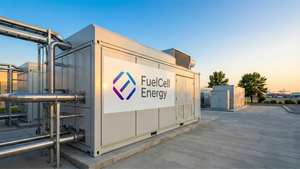A new heat pump + insulation = max efficiency
(BPT) - Thinking about upgrading your home's HVAC system with a new heat pump? It's the perfect time to add or upgrade your home's insulation, too.
These two projects not only work together to help you maximize comfort and savings, they're also eligible for substantial financial incentives thanks to the Inflation Reduction Act to help lower the cost of these upgrades. With federal tax credits, generous utility rebates, and state rebates, you can combine these different savings to significantly lower costs on top of energy savings.
Both projects are part of an ENERGY STAR Home Upgrade - a set of high-impact improvements that work together to help you live comfortably and maximize your energy savings. And the savings from these two projects can really add up. For the average American household, almost half of the annual energy bill goes toward heating and cooling - approximately $900 a year. Finding ways to efficiently heat and cool your home is key to reducing energy usage and saving money year-round.
Why a heat pump? ENERGY STAR certified heat pump HVAC is so efficient it can deliver up to three times more heat energy to a home than the electrical energy it consumes. It's a little mind-blowing when you think about it. This is possible because a heat pump moves heat rather than converting it from a fuel, as combustion heating systems do. That's why the federal government is offering these credits and rebates - this technology offers superior efficiency that allows households to save significant energy and money, while also being a better choice for the environment.
A heat pump also cools
It's a common misconception that heat pumps only provide heat. Not true! Despite the misleading name, heat pumps do double duty with both heating and cooling and are becoming a more popular solution in the U.S. due to their superior energy efficiency. It makes sense to combine the project with air sealing and adding insulation - you'll get the most savings and comfort with that one-two punch.
By sealing air leaks and improving the insulation in your home, the new heat pump won't need to work as hard to regulate temperatures, which helps make your home more comfortable while reducing energy usage and increasing your savings. Adding to or enhancing your attic insulation levels may also allow you to choose a smaller, less expensive heat pump.
ENERGY STAR certified ducted and mini-split heat pumps are available from a variety of manufacturers. Not sure where to start? ENERGY STAR offers online guidance to help customers, contractors, remodelers, or builders find heat pumps that qualify for these incentives.
Adding insulation? Start with the attic
It's wise to focus on your attic's insulation because it will help keep your house comfortable all year long. Here's how:
In the winter, as your system is warming your house, the heat rises. If there are holes in the attic floor and low insulation levels, that warm air will rise right out of the top of the house. Sealing air leaks and adding insulation in the attic can hold that warm air in and insulate from the cold outdoor air.
In summer, the sun beats down on the roof, overheating the air in the attic. That heat radiates down into your home, making it harder to cool. Adding a good amount of insulation in the attic prevents that heat from getting into the house, which increases comfort and reduces cooling costs.
Since attics are often unfinished, insulation is typically easy and inexpensive to add there. In many homes, sealing air leaks in the attic and insulating the attic floor are the best ways to improve the home envelope cost-effectively.
Don't forget your ductwork
Since airflow is essential to the HVAC system, improving ductwork when installing a new system is common sense. While you're in the attic adding insulation, make sure to inspect those ducts. Sealing, straightening, reconnecting and repairing holes in ducts can significantly improve the performance of the heating and cooling system. Adding insulation around the ducts that run through hot attics can also improve performance and energy savings.
ENERGY STAR has you covered
ENERGY STAR is the government-backed symbol for energy efficiency, providing simple, credible, and unbiased information that consumers and businesses rely on to make well-informed decisions. Since 1992, ENERGY STAR and its partners helped American families and businesses avoid more than $500 billion in energy costs and achieve more than 4 billion metric tons of greenhouse gas reductions. Visit energystar.gov/homesavings to find available savings on energy saving upgrades in your area.
More News
View More




Recent Quotes
View MoreQuotes delayed at least 20 minutes.
By accessing this page, you agree to the Privacy Policy and Terms Of Service.